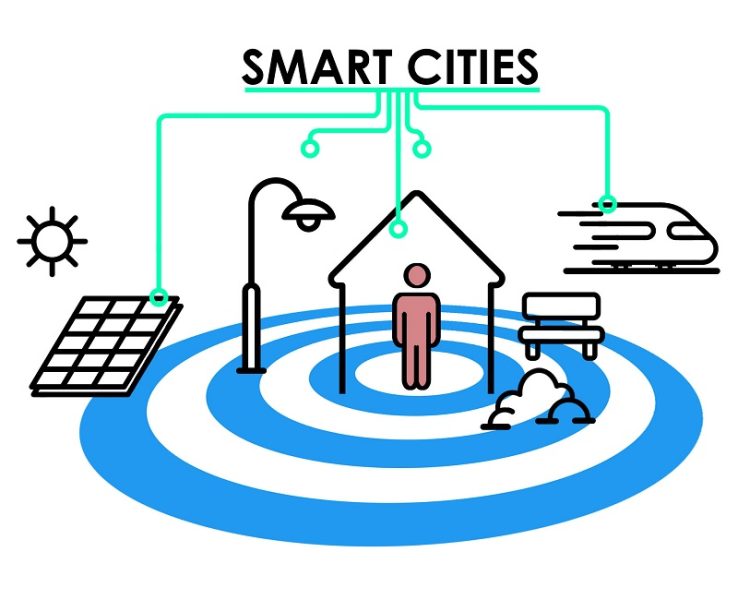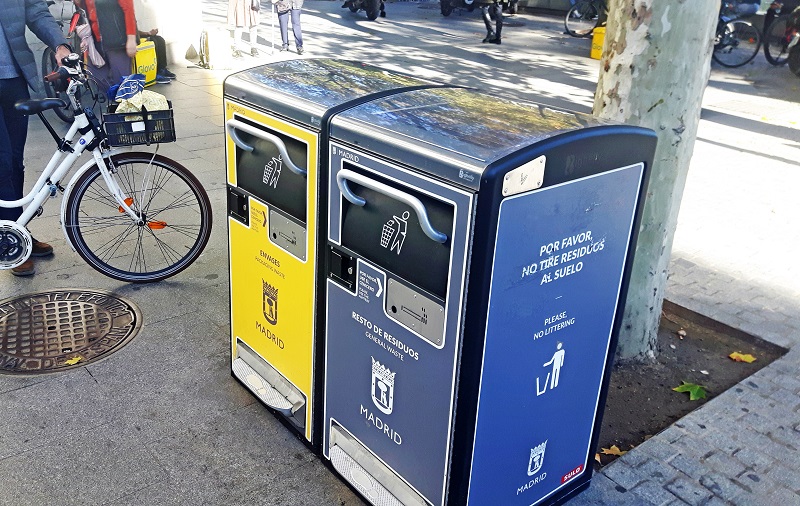13 January 2021
for Madrid Nuevo Norte


Smart cities have been a hot topic in recent years. Countless international initiatives have emerged based on new technologies that digitise urban environments. This boom in innovative electronic devices, such as sensors, wearables or data management equipment for urban use, could mislead people to think that a smart city is just about filling the urban environment with technological devices and digital “gadgets”. While the latest generation of devices and software are powerful tools that make measuring urban spaces easier and facilitate interaction with the user in ways never imagined before, a smart city is not about pushing technology, but integrating it consistently to streamline service management and, ultimately, improve the lives of citizens.
The great potential of a digital city lies in putting people at the centre of decision-making to improve their quality of life and achieve a more efficient economic, environmental and social environment.
It is about using technology to provide urban management processes tailored to the citizens’ needs and influence the way they interact with their surroundings every day, from their daily commute and mode of transport to the use of public facilities.
Although this type of technology is primarily being tested in consolidated cities, including large, complex environments like New York, Tokyo, Amsterdam, Singapore and Barcelona, host to one of the world’s main international congress, the Smart City Expo World Congress. New urban projects and developments, which are built from scratch, represent a unique opportunity to integrate the infrastructures consistently from the outset, going a step further in creating a fully optimised smart city.

This approach is more meaningful when applied to a dense and compact city model, which enables economies of scale and maximises the efficiency of urban systems. A truly smart city cannot be achieved with technology alone. It also needs a sustainable social, economic and environmental design as a starting point.
Another prerequisite for a smart city project is a state-of-the-art telecommunications infrastructure for both mobile phones and personal equipment, as well as urban vehicles and infrastructure. Digital solutions can only be implemented in large urban infrastructures, public spaces and buildings when this data stream is available everywhere. It is only then that citizens, as the principal target group, can interact with the system. Technological innovation measures can therefore be achieved at all scales, from the broadest—territorial, urban and neighbourhood—to the environment closest to the user.

When realising smart city ambitions, new urban developments can be dimensioned and structured to accommodate the telecommunications network that is better prepared for the future. This facilitates the creation of smart urban infrastructures, which may include energy, last mile logistics (delivery of packages and goods), and water and waste management. Importantly, these facilities should be integrated into the city’s overall management system to optimise the consumption of resources in a global, consistent and adaptive manner.
The urban regulations approved for Madrid Nuevo Norte already take into account this need for urban transformation and require the deployment of a data network that allows the creation of a smart city.
Following examination of the feasibility issues, pioneering energy management measures can be implemented, including the creation of a smart power grid that allows buildings to deliver electricity into the network. This enables users to become “prosumers” instead of consumers, that is, generators and consumers of this resource at the same time. Likewise, the buildings in Madrid Nuevo Norte will have charging stations for electric vehicles that will also allow energy to be stored in the vehicles’ batteries, feeding energy back to the grid at peak consumption times, thus optimising the efficiency of the system.
Public space, that is to say, the streets and parks we all enjoy, can also be integrated into smart city networks, significantly improving urban mobility. Citizens can use the practical real-time data collected on the streets to make decisions as they commute.
Meanwhile, the use of sensors in urban furniture (benches, marquees, traffic lights or streetlights) allows these elements to be better adapted as required, thus optimising their performance. These sensors can be, for instance, light sensors that detect when it gets dark or the day breaks or if it is cloudy to regulate the necessary light level and ensure significant energy savings. Other sensors would measure temperature, humidity or pollution, leading to the implementation of measures that correct environmental conditions and regulate irrigation of green areas. The possibilities are endless.
As an illustration of the multiple applications in this field, London is implementing an ambitious pilot project to install streetlights, information panels and other urban furniture that adapt to the needs of each user as the person passes close to the element. This system is specially designed for people with disabilities. Although it is still in the prototype phase, the system includes an app installed on mobile phones that identifies the presence of the pedestrian. Depending on the type of disability and the user’s preferences, the elements found on the streets react differently. For instance, streetlights would briefly shine brighter or play audio information customised for each user. Even the traffic lights would adapt to each person’s needs, allowing more time to cross the street without risk.
There is no need to go to London to enjoy smart city features; you only have to walk through Madrid. Over one thousand solar-powered smart bins have been installed this year. These bins compact the waste to increase its capacity and use sensors to signal that they need to be emptied. This prevents overflow and makes collection easier for the municipal services.

A smart city is unthinkable without smart buildings, integrated into the urban network. The real estate sector has been incorporating technologically advanced interactive elements for decades to optimise efficiency in facilities and increase comfort for people in residential buildings and offices. Home automation has become a concept that is neither foreign nor futuristic. It has long been integrated into many new housing developments to control air conditioning or lighting in rooms.
The most recent revolution is being led by the so-called Internet of Things (IoT), a technology that enables interaction with virtually every object in a home, from a microwave to a light bulb. However, beyond home automation and its contribution to greater comfort and energy saving in each home, the greatest potential lies in applying digital advances to the facilities installed within a building, whether homes, offices or public facilities, and interconnecting these with data systems at the district- and city level, to deliver exponential growth in energy savings and management benefits.